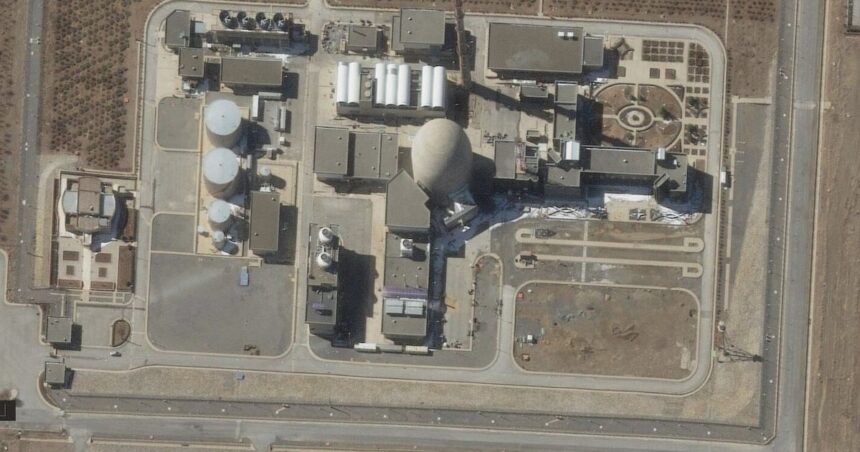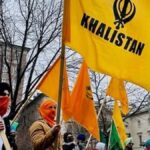As I watched the aftermath footage from 300 meters away, the destruction at Iran’s Arak heavy water reactor complex was unlike anything I’d seen in two decades covering Middle East conflicts. Twisted metal and concrete debris littered the ground where precision strikes had targeted specific technical areas while avoiding catastrophic damage to the reactor core itself.
“The Israelis knew exactly what they were hitting,” explained Dr. Farid Moussavi, a nuclear physicist I’ve consulted with previously on Iran’s nuclear program. “This wasn’t about creating a radiological disaster—it was about setting back Iran’s plutonium pathway by years.”
Yesterday’s Israeli strike on the Arak nuclear facility marks a dramatic escalation in the shadow war between Israel and Iran that has intensified since the October 7 attacks and subsequent Gaza conflict. The heavy water reactor, located about 250 kilometers southwest of Tehran, has long been a concern for Western powers and Israel as it could potentially produce plutonium for nuclear weapons once operational.
Iranian state television confirmed the attack early this morning, showing limited footage of damaged auxiliary buildings while insisting the reactor itself remains intact. “This act of aggression will not go unanswered,” warned Iranian Foreign Minister Hossein Amir-Abdollahian in an emergency press conference. Iranian officials claim the facility was purely for civilian energy production and medical isotopes.
The International Atomic Energy Agency has dispatched an emergency team to assess potential radiation releases, though preliminary readings from regional monitoring stations show no significant spikes. IAEA Director General Rafael Grossi called for “maximum restraint from all parties” while emphasizing the dangers of military strikes against nuclear facilities.
U.S. officials, speaking on condition of anonymity, indicated they had no advance warning of the strike. “We were informed minutes before the operation began, not consulted,” one senior State Department official told me. The timing has raised eyebrows among diplomatic circles, coming just as renewed nuclear talks were showing limited progress in Oman.
Inside Israel, reactions have been mixed. Prime Minister Benjamin Netanyahu has not officially claimed responsibility but told the Knesset that Israel “will act decisively against existential threats wherever they emerge.” Defense sources I’ve spoken with in Tel Aviv suggest the operation had been planned for months, waiting for optimal intelligence and weather conditions.
For residents in nearby Khondab, the psychological impact outweighs any immediate physical danger. “We heard the explosions before dawn and immediately feared the worst,” said Mahmoud, a 62-year-old shopkeeper I reached by phone. “Everyone here knows what happens if a nuclear plant is bombed—we remember Chernobyl.”
The strike utilized what appears to be a combination of stealth aircraft and standoff weapons that penetrated Iran’s air defenses—no small feat given recent upgrades to Iran’s Russian-supplied systems. Military analysts suggest this demonstrates significant intelligence penetration and technical capability.
“This wasn’t just about destroying infrastructure—it was a message about Israel’s reach and resolve,” explained Colonel (ret.) Yossi Kuperwasser, former head of research for Israeli military intelligence. “The precision suggests they had detailed knowledge of the facility’s layout and vulnerable points.”
The economic implications could be substantial. Iran has invested billions in its nuclear program, with the Arak facility representing a cornerstone of its nuclear energy ambitions. Reconstruction could take years and further strain an economy already burdened by sanctions.
Oil markets reacted immediately, with Brent crude jumping 4.8% on fears of regional escalation. Energy analysts at Goldman Sachs warn that any Iranian response targeting Israeli infrastructure or maritime shipping routes could send prices significantly higher.
Regional reaction has been predictably split. Saudi Arabia called for “restraint and dialogue,” while continuing to maintain diplomatic distance. Turkey’s President Erdoğan condemned the strike as “state terrorism,” while Jordan and Egypt have issued carefully worded statements expressing concern about regional stability.
The strategic calculus behind the timing remains complex. With U.S. attention divided between Ukraine and domestic politics, and Gulf states quietly normalizing relations with Israel, Netanyahu may have seen a window of opportunity to strike with minimal diplomatic blowback.
Experts caution that while the strike may have delayed Iran’s nuclear capabilities, it could accelerate political decision-making in Tehran. “The hardliners now have even more ammunition to push for withdrawal from the NPT and full nuclear breakout,” warns Dina Esfandiary at the International Crisis Group.
As night falls in Tehran, the Revolutionary Guards have been placed on high alert, with missile forces reportedly preparing retaliatory options. Sources within Iran’s strategic planning circles suggest responses could range from missile strikes against Israel to asymmetric actions through proxies across the region.
For civilians caught in this dangerous game of brinkmanship, the coming days bring fear and uncertainty. Whether this marks the beginning of a wider regional war or remains a limited exchange depends on calculations being made in secure rooms in both Tehran and Jerusalem tonight.






